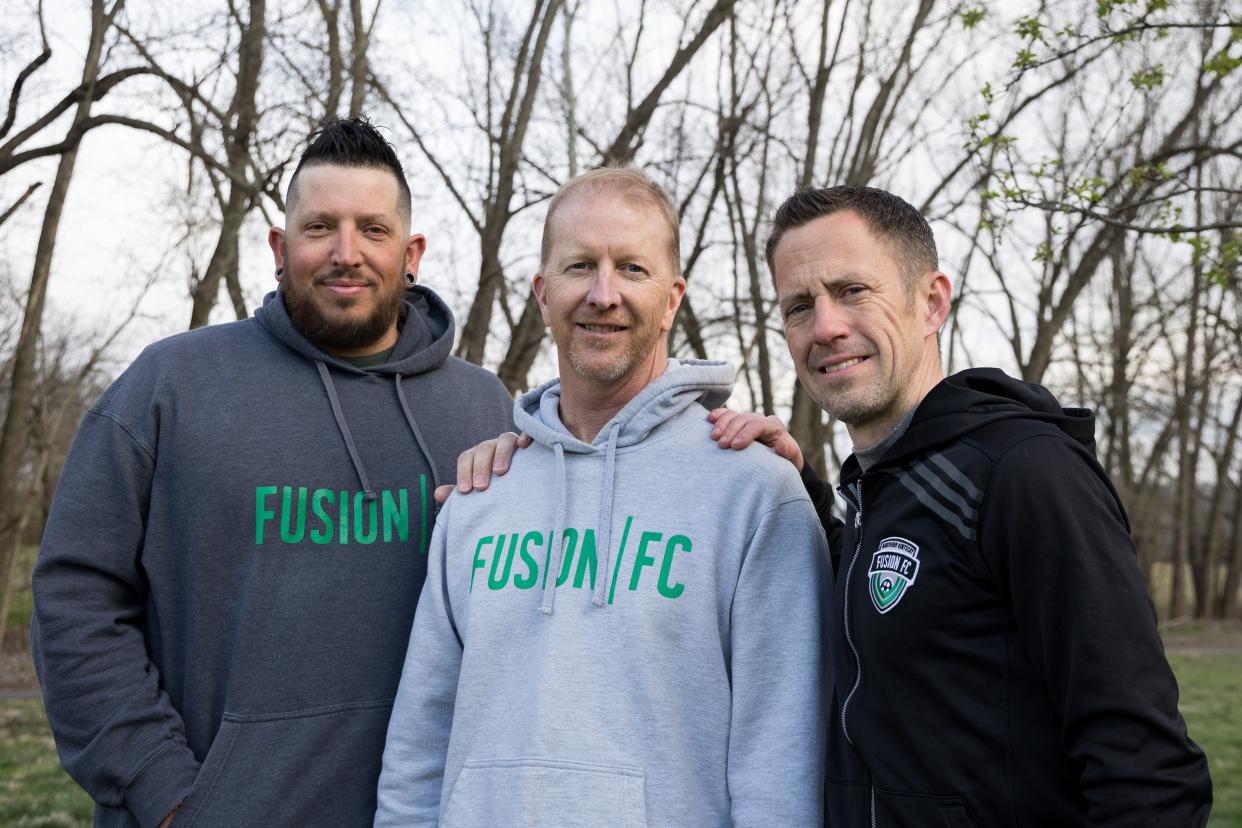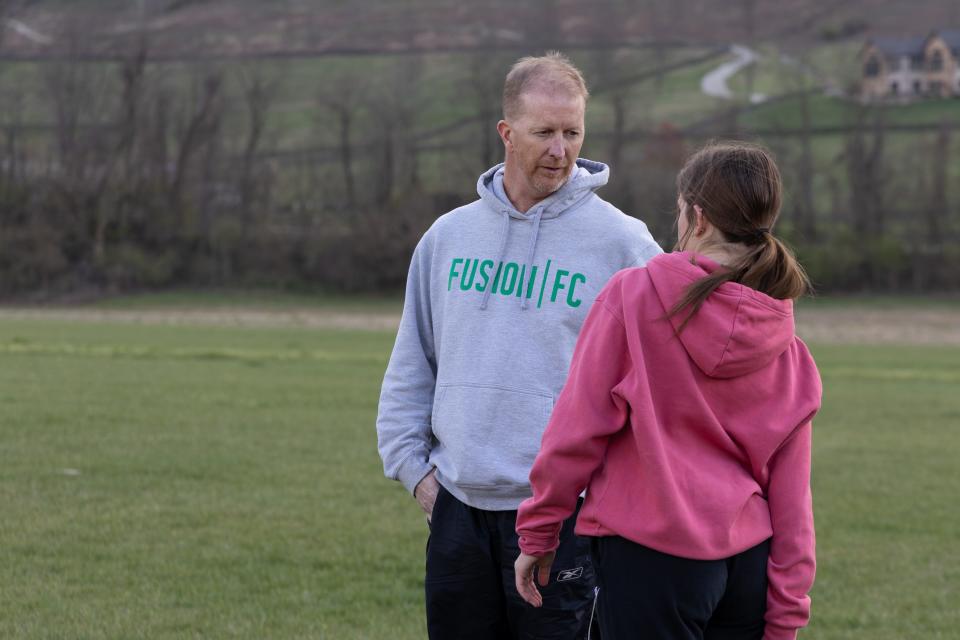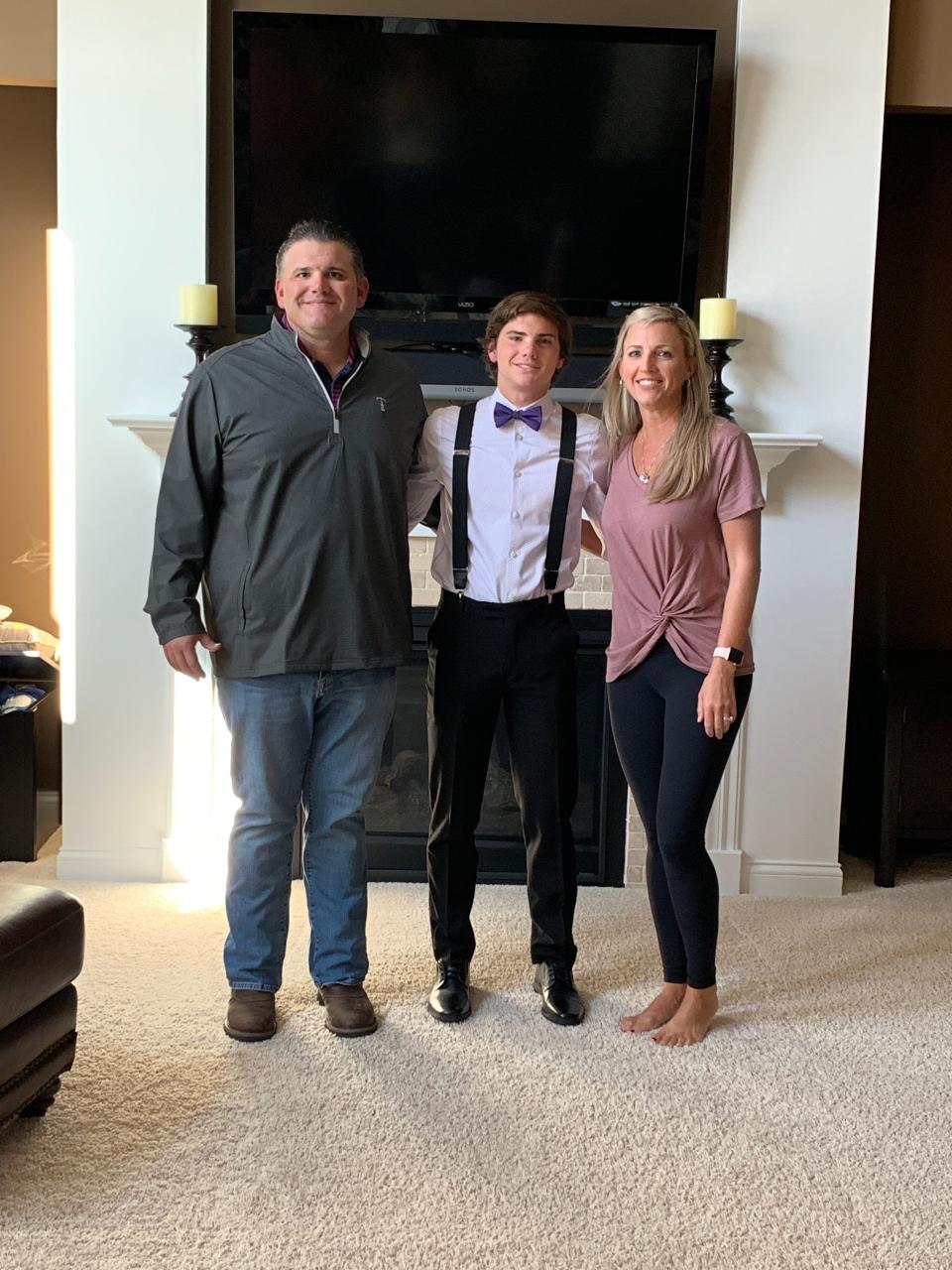When a Kentucky athletic trainer taught CPR to a team's coaches, he saved a life - his own

- Oops!Something went wrong.Please try again later.
When he was learning to do CPR, Travis Little never thought he would have to use it on someone he knew.
But just three weeks later, the girls club soccer coach found himself running toward the field's edge. He yelled for his assistant coach, Alex Flamm, to call 911.
Flamm had joined Little during the CPR training, where they were instructed to do chest compressions to the rate of the Bee Gees' song “Stayin’ Alive.”
Ah, ah, ah, ah, stayin’ alive. Stayin’ alive.
As an athletic trainer, Mike Quinn knows all about sideline safety and emergency response. Athletic trainers are the health care providers of the sideline.
He helped train Little and Flamm in the February CPR class, but on March 6, it was Quinn who was lying on the edge of a soccer field.
“In any other situation, he would have been the one delivering CPR, and we would have supported him,” Little said. "It could have been anyone. But it was the person who’s been pushing, pushing, pushing, pushing ― adamant to get us trained."
Quinn's push began nearly three years ago following the death of a Northern Kentucky high school athlete.
But a life lost became a life saved.
'If we can’t get the AEDs, we can all learn CPR'

In June 2020, Northern Kentucky soccer player Matthew Mangine Jr., 16, collapsed during high school soccer conditioning at St. Henry District High. Twelve minutes elapsed before EMS personnel could arrive and use a defibrillator (AED) on him. It was too late.
Quinn has known the Mangine family for 30 years, from school sidelines to working alongside the family, which also works in health care.
Following Matthew’s unexpected collapse, he began pushing Fusion FC, his daughter’s Northern Kentucky select soccer club, for venue-specific emergency actions plans, on-site AEDs and CPR training.
He asked the club to talk with Matthew’s parents, who launched a foundation to help provide the life-saving response tools.
Fusion FC was still working toward the safeguards when NFL safety Damar Hamlin collapsed during the Buffalo Bills’ game in Cincinnati’s football stadium, which sits on the edge of the Northern Kentucky riverfront.
More:Damar Hamlin's collapse brings painful memories, concerns about Kentucky athlete safety
Quinn’s push for health care on sidelines could no longer be ignored.
“If we can’t get the AEDs, we can all learn CPR,” Quinn said. “That’s free.”
In mid-February, all Fusion coaches were CPR trained.
Little was on his knees as the heel of his hand pushed into the chest of a CPR dummy. Quinn knelt next to him as he delivered compressions to the plastic chest.
“Hold your arms straight,” Quinn said, “or you’re going to wear yourself out.”
Matthew Mangine Jr. foundation's 'first save'
The first Monday in March was a rare 75 degrees and sunny.
Little's Fusion FC Fury team of girls, ages 15-and-under, which includes Quinn’s daughter, normally practices indoors during March. The nice weather pushed practice outside to Erlanger Lions Field.
As the Fury’s injury management coach and resident athletic trainer, Quinn leads the team through warm-ups to reduce injuries. After that, he leaves the coaching to the coaches and goes for a run.
That Monday, Quinn popped in his earbuds and started down the field, away from the team’s practice. He made it about 100 yards.
There were no warning signs.

“During training with the dummy, you can hear the click-click-click-click for the cadence,” Little said, “but this is a real person. There are no clicks.”
Hold your arms straight, or you’re going to wear yourself out.
“I remembered that and corrected myself,” Little said. “People are worried they’re going to mess up or do something wrong, but the worst thing to do is to do nothing.”
More:Family of Kentucky teen who died at soccer practice reaches settlement with school
Little delivered chest compressions for four to five minutes, while Flamm unlocked the gate and directed EMS where to go before taking over compressions.
“Honestly, it was like second nature because I’d been through trainings,” said Flamm, an aide at a nearby school that goes through CPR training annually.
From collapse to EMS care, seven minutes passed.
Three days later, Quinn woke up in the hospital. He’d had a 98% blockage in his circumflex artery, a plumbing issue of his heart, not an electrical one.
“The doctor said it was going to happen at some point,” Quinn said. “I could have very easily been driving the car and wrecked with my children in it.”
The coaches saved Quinn's life, in part, because of a venue-specific emergency action plan.
Quinn had just gone over the team’s EAP with the coaches.
St. Henry District High School didn’t have such a plan for the practice field where Matthew Mangine Jr. collapsed.
“Those plans are there in hopes no one ever has to do that, but if it does, you want to know exactly what to do,” Little said.
Then there’s the CPR training.
“CPR and AEDs are as important to sports as soccer training,” Little said.
There was no AED at Erlanger Lions field that day.
Following Hamlin's collapse, the Erlanger Lions also spoke to the Mangine’s foundation and ordered three AEDs in February, but they’re on a 10-week backorder.
The Matthew Mangine Jr. “One Shot” Foundation has donated AEDs to 35 Greater Cincinnati schools and teams and provided CPR training to more than a 1,000 individuals, in large part because of donations.
It was the first save attributable to the foundation's work. When he learned the save was of someone he’d known for decades, Matthew Mangine Jr.’s dad, Matthew Sr., had a rush of emotions.
“When Matthew passed away, every story I read about was a loss,” he said. "Now, after Damar, many are saves. I want to hear more of those."
Nearly 1,000 days and one mile from where Matthew Jr. collapsed, Quinn was saved.
This article originally appeared on Louisville Courier Journal: How Matthew Mangine foundation helped KY athletic trainer save a life

